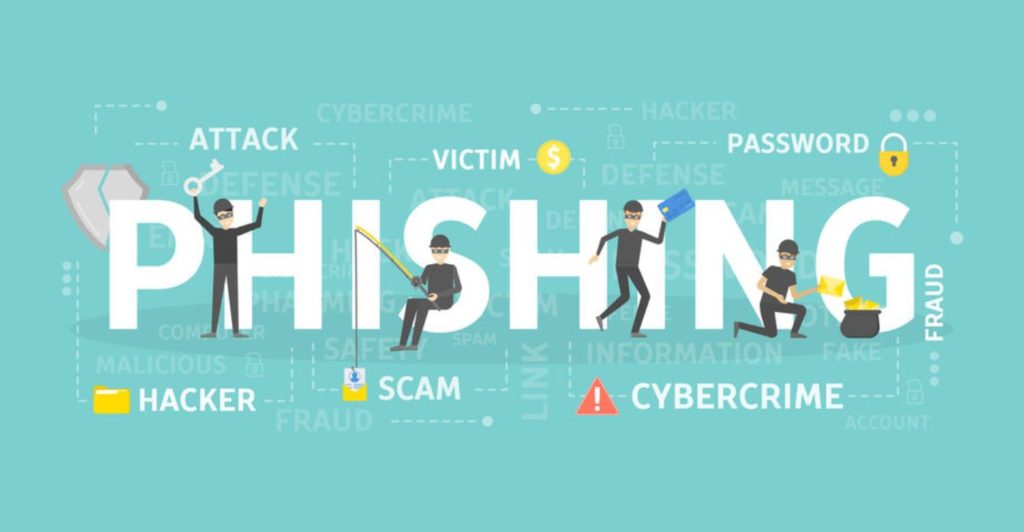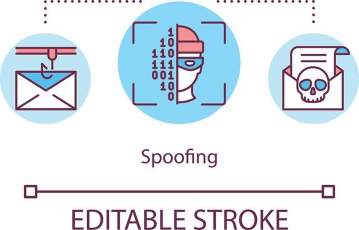The World Wide Web (www) is a massive network facilitating the connectivity and communication of millions of people and machines. But this online world is also rife with different scams that are becoming common with each passing day.
It doesn’t mean that the internet is dangerous to use. Undoubtedly, the internet has transformed the world into a global village, connecting you with anyone from anywhere in real-time. Other benefits of the internet include access to immediate information, the massification of knowledge, creating jobs, and much more.
However, today, the same internet can be used for unpleasant things like scamming and extorting innocent people. While some forms of online fraud employ advanced tactics, others are outdated, but they still work.
It doesn’t mean that one should stop using the internet — it’s practically impossible now. But knowing more about the scams and fraud schemes will help you stay safe online.
Quick list of the most widely used scamming schemes
Here is a summary of the common online scams if you are short on time to go through the entire article.
- Advanced-fee scam – Exist in many forms but mainly involves asking the target to send money upfront to get the promised reward.
- CEO fraud – Mainly targets business where the scammer impersonates a person with authority like the CEO, account, or HR manager and demands transfer of money or data.
- Funeral scam – A fraudulent funeral director exploits the elderly by inflating the cost or offering unnecessary services.
- Skill/talent contest scam – The scammers prey on teenagers’ eager to develop their skills and talents by asking for entry and facilitation fees.
- Ransomware – This is hazardous malware that enables the criminal to encrypt the target’s files and demand a fee to decrypt them.
- Whaling – It is a variation of the phishing scheme where a fraudster infiltrates an organization and impersonates individuals to steal sensitive data or money.
- Bank fraud – The scammer calls the target and pretends to represent a financial institution to fleece money or private data.
- Fake celebrity news – This scam is very popular on social media sites where fraudsters create click-bait fake celebrity news but redirect to phishing sites.
- Vacation ticket resells – The scammers post appealing ads advertising traveling tickets at below-average prices yet there are no tickets at all.
- Fake refund – This is another instance where the fraudsters impersonate IRS or other tax agencies. They urge the target to click on a link to get a refund but are redirected to a phishing site.
Top cyber scams and schemes today – The detailed list
We will provide a snap view of some of the most common internet scams because it is impossible to exhaust all of them.
So, below are some of the most common internet scams in operation today. We have grouped them into different categories to make understanding and recognizing them easier. Of course, as noted earlier, it is not possible to exhaust all of them, but this guide will give you an idea of what to look out for.
Email-based scams
Emails have become a common method for most internet frauds. It is a popular communication medium, so executing a scam is effortless and cheap. Fortunately, it is relatively easy to spot some scam emails because they are poorly written. However, some are extraordinarily refined, and millions of people have lost their money and personal information.
Here are some of the email-based online scams common in the wild.
1. Charity fraud
Charity fraud is one of the most widely used scamming schemes to lure people into making donations to fake organizations and charities. The scammers can use any subject, including disaster relief efforts, animals in danger, or anything that can spur emotions.
In most cases, the email will link to an authentic-looking website and even come with an excuse about why it is a matter of urgency. The worst is that the victim may provide credit/debit card details and other private details besides sending money to the attacker.
2. Advanced-fee fraud
The advanced-fee fraud comes in many ways, like, you have won a lottery, an old bank account, or a beneficiary of estate money. Regardless of the subject, the message will require you to send a fee upfront so you can get whatever is promised.
3. Work at a home job scam
Working from home has a lot of benefits, such as flexible schedules, less commute stress, increased productivity, and more. Hence, many people wish to work from home, especially in the post-COVID-19 scenario. But unfortunately, scammers are taking advantage of the situation by offering fake yet seemingly realistic working opportunities. In most cases, they will ask the victim to send a fee in advance for registration or educational material.
4. Nigerian 419 scam
It is another form of advanced-fee fraud. But, given its prevalence, it requires a separate mention among online scams. Usually, the scammer promises a hefty commission to help them move a considerable amount of money. However, the scammer requests some money to facilitate the transfer. The scammer can disappear after receiving the money or continue asking for more depending on the gullibility of the target.
5. Canceled account
Some fraudsters use many resources and time to create emails that resemble reputable service providers like Netflix. They then email the victim stating that their account has a problem and needs specific information for resolution. The email may also contain a phishing site link requiring the victim to submit their billing details and login credentials.
6. Greeting card fraud
Electronic greetings or postcards have become popular recently because of their convenience and affordability. However, they come with a risk as scammers can use them to rip off innocent people. Like other email-based frauds, scammers use social engineering tactics to lure the victims into responding. Therefore, it is not surprising that greeting/postcard scams are prevalent during Mother’s Day, Valentine’s Day, and other similar occasions.
Usually, you will receive an email message with a catchy subject line. For instance, it would mention that someone you know has sent you an e-card. The email will have a logo of a reputable greeting-card company to make it look genuine. Also, it may contain a link that will redirect you to malicious software that gives the scammers access to your device.
7. CEO fraud
CEO fraud or Business Email Compromise (BEC) is another common scam scheme that targets online businesses. It has risen sharply recently. Here, the scammer impersonates a person with authority and requests the transfer of money or sensitive information. Typically, the email will sound very urgent to minimize doubt and scrutiny.
Nowadays, it is straightforward to execute this fraud because Linkedin offers all the necessary information to impersonate a person. Therefore, the fraudster will only need to identify a target and create a convincing story. However, it requires adequate preparation since the scammer needs to be as compelling as possible.
8. Affinity fraud
This type of internet scam targets members of a joint group like age, race, religion, etc. The fraudster has to earn the trust of a respected person in the group for the scheme to be successful. After creating the bond, they take advantage of the connection to steal money from the other members. They can even pay the influencer in the group without letting that person realize the scam.
The affinity scam is popular in Ponzi or pyramid schemes. The fraudster gets money from new investors to pay for previous ones. Usually, the fraudster presents an attractive opportunity to make money, yet it is a Ponzi scheme. They will do everything possible to sell the investment opportunity and even convince the investors that their money will grow immensely.
9. Service provider fraud
It is another scam that mainly targets businesses. The email will contain an invoice for a product or service offered. As always, the fraudster will include a sense of urgency to compel the receiver to transfer the funds or face the consequences.
10. Scam compensation scam
Although not famous, it is a common internet fraud, especially in spam folders. The email may come with different subjects but mainly involves some form of compensation, and the target is a beneficiary. However, they must first send money or personal information to receive the funds.
11. Guaranteed bank loan or credit card
This one is also a variant of the advance fee scam where the cybercriminal promises the target a bank loan or credit card. The catch is that the target’s credit rating does not matter. However, they have to pay upfront money for the application, processing, insurance, or another vector. The scammers will also try to get the victim’s bank account details.
Elder fraud

Although most online frauds can target anyone, some specifically target senior citizens. Below are some of the common online scams that target the elderly.
12. Health scams
Aging comes with many health problems that require prescription medication, which can be expensive. As a result, nowadays, many online pharmacies are providing drugs and other healthcare services at affordable prices. However, some are not legitimate and don’t conform to the law or standard practices. They are just set up to exploit people looking for affordable health care services.
Another form of health scam is where the scammers sell fake healthcare products as legitimate alternative medicine. They lie that the product has comparable quality but is more affordable or offers a miracle cure. The results can be severe or even cause fatal injuries in both instances.
13. Insurance schemes
Perpetrators carrying out the insurance fraud assume that the elderly have money to leave behind when they pass on. They may send an email or call to coax the target to sign an insurance policy or annuity. In most cases, some of these insurance frauds are executed by legitimate agents, and some have even been caught.
14. Investment scams
Many seniors save money for their retirement, and even some look for investment opportunities to supplement income. However, this makes them more vulnerable to investment scams. The thieves pose as financial advisers to offer bogus advice at a fee or try to access the elderly’s funds.
15. Stimulus check scams
Stimulus check scam is one of the top cyber scams and schemes that has caused the elderly to lose a lot of money. The fraudsters take advantage of hardships, such as the Covid-19, and promise the seniors a stimulus package. But instead, they send an email with a link to a site that collects the victim’s personal information or downloads malicious software.
16. Sweepstakes/lotteries scams
Unfortunately, this scam has been targeting the elderly for a long time. Usually, the victim receives an email or a phone call claiming that they have won money in a sweepstake or lottery but must pay a fee to get the prize. Some scammers are clever to include a sense of urgency to make the victim send money as soon as possible. For example, recently, they have been saying that pandemic-related restrictions will delay or postpone the jackpot.
17. Romantic scams
In this scam, the fraudster steals from the elderly by exploiting their loneliness. It works like this: the elderly meet someone interesting on the internet and communicate virtually without meeting in person.
After building trust, the fraudster sweetheart convinces the victim to send them some money to facilitate something. For example, some may pretend to be abroad and need money for medical expenses, visas, and travel expenses. It can be a one-time event or a repetitive one for an extended period.
18. Funeral scams
The cyber scammers use the obituaries to get more information about the deceased to extort money from the bereaved family and friends. For example, they can claim that the deceased left substantial debt to settle immediately. The victims are likely to pay because they are in a venerable state of grieving.
In another form, a fraudulent funeral director can exploit the elderly unfamiliarity with the funeral details and inflates the cost or add unnecessary services. For example, they can include a casket, yet the deceased preferred cremation.
19. Homeowner/Reverse mortgage scams
Many people beyond a certain age own homes, so scammers are trying to capitalize on it. For example, in a specific scamming case in California, fraudsters impersonated County Assessor’s office and sent personalized letters to various property owners. The letter demanded the reassessment of the property’s value to determine the tax burden, for a fee, of course.
On the other hand, legitimate reverse mortgages have increased significantly, and scammers exploit this popularity. They lure the target into handing over their title in exchange for money or a free house somewhere else. It causes the victim to lose their homes.
20. Grandparent scam
The scammer calls the elderly and claims to be a grandchild. One trick that the fraudsters use is asking if they recognize who it is and pretend to be whoever the victim mentions. They then convince the grandparent to send them money to sort out something. It can be a one-time scam, or the scammer continues asking for more money.
Teens scams
Today’s teens are tech-savvy because they have grown up with smartphones and computers. However, they are more trusting and inexperienced when interacting with others. It makes them vulnerable to online fraudsters.
Here are some of the common scams that specifically target teenagers.
21. Online shopping scams
Teenagers are big online shoppers, which is more convenient than queuing in malls or grocery stores. However, sometimes, scammers create fake online stores to lure shoppers into providing money or personal information, yet they don’t sell anything. For example, a teenager can be easily enticed with a designer shoe or handbag at a fraction of the retail price. Upon paying, the scammer will disappear without delivering the product.
22. Skill or talent contests
Online scammers are also preying on the teenagers’ quest to develop their skills and talents. For example, more recently, young people have been asked to enter music compositions, artwork, creative and writing competitions to win money or become famous. However, they have to provide entry fees and other extra money to cater for promotions, publications, and more.
23. Student loan debt waiver scam
The fraudsters use company names that appear legitimate and affiliated with the government. So, they ask the student to pay a fee with a promise to forgive their loans. However, real student loan forgiveness does not require any fees.
Some fraudsters even promise consolidation loans, combining multiple loans into one. It gets easier as the student will pay once every month instead of multiple times.
24. Scholarship and grants scams
Young people and their parents easily fall into this scam as higher education is expensive. The scammer may ask for a fee to provide ‘proprietary information’ that the rest of the population doesn’t know, to help the student get the scholarship. The scammers even promise to refund the money if the scholarship does not materialize to make it sound more genuine.
25. Online auction scams
Fraudsters also target unsuspecting teenagers with different types of online scams. For instance, the scammer may ask a teen to pay for an item won in a lottery – even though it doesn’t exist or never arrives.
In another form, teenagers are urged to auction off their possessions on the internet. However, the scammer asks the teen to send the item(s) in advance, and payment will arrive later. The auction never happens, and they won’t even send the payment.
26. Webcam security scam
Zoom classes played a vital role during the Covid-19 pandemic as students couldn’t meet in class because of social distancing. It led to the growing use of webcams, which cyber criminals started exploiting. Hackers can infiltrate webcams and steal private information and images to extort teenagers and their parents.
27. Weight loss scams
Most teenagers, especially girls, have self-esteem issues with their body image. Unfortunately, online fraudsters will weaponize this self-doubt and use it to sell useless and sometimes potentially dangerous products and services. It can come in many forms, from the keto diet pills to doctored images in ads with a promise for quicker results.
Extortion scams
Extortion scams use the same principle: the victim has to provide money urgently or expect a consequence. But, again, the scheme can be complicated or straightforward, depending on the perpetrators’ imagination.
Here are some of the common online extortion scams you should know.
28. Ransomware
Ransomware is a malware type that fraudsters use to encrypt a victim’s files and promise to decrypt them upon paying a fee. WannaCry attack is one of the worst cases of a ransomware attack in May 2017, affecting more than 400,000 computers. The attackers used a hack known as EternalBlue to exploit a weakness in the Windows operating system. Updating your OS regularly and backing up your files can be an excellent way to stay safe against ransomware threats.
The most common method most hackers use to infect the victim’s computer with ransomware is an email with a malicious attachment. For example, the victim can get an email from a parcel delivery company about a delayed or missing delivery. The malware will download automatically once the victim clicks on the attachment or link.
29. Hitman
It is a dangerous scam involving violence and is usually sent through email. The fraudster claims that they have been hired to kill the victim and will abort the mission in exchange for a fee. They will even include personal details collected from different sources in the email to make it more convincing and threatening. Besides money, scammers can also try to extract personal information to use in identity theft.
30. Sextortion
Sextortion is a type of extortion where the victim is lured into providing intimate photos and videos. The extortionist then threatens to leak the content to the public unless the target pays. Unfortunately, the potential harm to a person’s family relationship, job prospects, and societal reputation raises the stakes. So, the victim will do anything possible to meet the fraudster’s demands and may never report the matter to authorities because of embarrassment.
31. DDoS attack
A Distributed Denial of Service (DDoS) attack is a popular cyberattack where the attacker takes down websites or the entire internet. Usually, the attacker will flood the web servers with dummy traffic, making the site slow or virtually worthless. This situation can last anywhere from a few hours to several months. After that, the target must pay a fee to get back access to the service.
32. Terrorist or Bomb threat scam
It is another form of the hitman scam that takes advantage of the societal fear of terrorist attacks. Again, the premise is the same: the attacker asks the victim to pay some money to prevent the attack.
Another similar and common fraud is the bomb threat scam. Here, the fraudsters exploit people’s fear of terrifying world events like 9/11. They will usually send an email claiming that a bomb is planted in a building, and a fee must be paid to disconnect it.
Phishing

We have touched on this in other sections, but phishing is involved in many online scams. That is why we have dedicated a standalone segment to talk more about it. The premise is to trick individuals into providing information that fraudsters use to scam them.
Since the odds of conducting a single successful scam are minimal, online fraudsters involve a large pool of potential victims. The most effortless way to contact many people simultaneously is through email.
One of the most common scenarios is where the victim is redirected to a clone website after clicking a link. For example, it can be a Netflix or online bank website, and the hacker steals the login credentials. Also, the victim can be tricked into downloading malware.
Here are some of the common phishing scamming examples.
33. Whaling
Fraudsters use whaling phishing scams to masquerade senior individuals in an organization to target other vital players within. They aim to steal money, classified information, or access the computer system for malicious purposes. (It is similar to the CEO fraud described above.)
34. Spear phishing
Spear phishing is also among the common online scams of today, targeting a specific person for malicious purposes. Although the primary intention is to steal money or data, the fraudster may also install malware on the targeted individual’s computer.
Usually, the victim receives an email from a reputable source but is instead redirected to a fake site filled with malware. The cybercriminal will use clever tactics to evoke the victim’s attention. For example, the FBI says that some spear-phishing scam emails appear to originate from the National Center for Missing and Exploited Children.
35. W-2 phishing
Form W-2 phishing scam is one of the biggest threats in the tax community, according to the Internal Revenue Service (IRS). The scam is particularly deceptive because it involves an extensively researched and carefully crafted email that may pass the company’s spam filters. In addition, it can originate from an existing or spoofed account of an executive, making matters even worse. The scammers can use the W-2 documents to file fake tax returns, sell to other criminals, or perform identity theft.
Vishing
Vishing is a phishing tactic where the scammer calls the victims illegally to obtain confidential information or money. Although the scam is not done online, it is becoming widespread and more sophisticated, so it’s worth mentioning.
The fraudsters use social engineering techniques to convince the victim to do something they believe to be in their best interest. In most cases, the scammer pretends to be calling from the tax department, bank, or the police. Also, they use savvy tactics to make the victim feel like they don’t have any other option but to provide the asked information. For example, some criminals pretend to be helping the victim avoid legal implications, while others use strong and forceful language.
Another common method is to leave behind a threatening voicemail telling the victim to return the call immediately or risk imprisonment or bank account closure.
Email and SMS spams are cheaper and easy to execute. However, calling a victim requires more resources and effort, so the stakes are higher than sending an email.
Some criminals prefer vishing over phishing through emails because it involves no spam filters. In addition, the probability of capturing the victim’s attention is higher because calls are less abundant than emails. However, calls are more expensive than emails, but criminals are now using Voice over IP (VoIP), which is more cost-effective.
The matter is even worse nowadays as it is straightforward to spoof caller ID numbers. Therefore, a fraudster can present themselves as anyone they want.
Below are some of the common vishing scams
36. Bank fraud
Bank fraud vishing scam is very widespread. The scammer will pretend to be an agent of a financial institution and claim suspicious activity on the target’s account. This is an alarming vector, and most people will probably fall for it. The main aim is to collect personal or account information, although some fraudsters go a step further. For example, the victim can be lured into installing ‘protective software’ to prevent further fraudulent transactions. However, this gives the fraudster access to the victim’s computer.
37. Prize fraud
Usually, victims are informed about fake content winnings and prizes through phone calls or automated messages. This can be in the form of money, all-expenses-paid vacation, or a car. However, the scammer intends to extort personal information such as social security numbers, addresses, bank details, etc.
38. Tax scam
Tax scams are mainly executed through phone calls or emails. Usually, the fraudster may automate the first content via phone to simultaneously reach a vast number of victims. So, the scammer will only speak with whoever calls back. It is considered a qualified lead because the victim has passed the first stage of the scam. We will cover more on this topic later in the article.
39. Tech support scam
Generally, this scam will start with a phone call and later shift online. The fraudster impersonates a technician of a big company like Microsoft and will inform the victim that their computer is infected with a virus. They will then claim that they can fix the issue remotely.
However, they do whatever they want once they gain access to the victim’s system, like installing malware. Sometimes the victim may be asked to pay for the services once the fake technician finishes fixing the issue. At this point, the fraudsters will have the victim’s payment information and remote access to their computer.
40. Government agency fraud
A scammer can call a victim claiming to work for a government agency like the FBI or IRS. Because this is intimidating, most people will be scared and will comply with the caller’s demands. Criminals will then exploit this fear to get whatever personal information they want. (Remember that any legitimate contact from the government is done in person or through an official email, at least.)
Social media scams
Social media provides scammers with a perfect environment to prey on victims to extort money or personal information. Although, this method can execute many online scams. But some appear specifically on social media platforms, like the ones explained below.
41. Fake celebrity news
It is a popular scam on almost all social media sites where cybercriminals craft a click-bait headline on fake celebrity news. It can be in many forms, like a new relationship or death. When the victim clicks on the link, they will see a prompt asking for their login credentials. Doing so gives the scammer full access to their social media accounts.
42. See who viewed your profile
The scam typically exploits Facebook users’ curiosity. For example, a pop-up can appear promising the victim to know who viewed their profile. However, this is a lie, as Facebook does not provide this information to anyone, even third parties. Unknowingly, the victim will hand over their account to the fraudster with all their personal information, including where they live.
43. Impersonation scam
Typically, it is effortless to create a new social media account. In the same way, a criminal can identify a target and create a replica of their public profile. It gets easy for the fraudster to connect with the victim’s family and friends. After gaining trust, they can use the connections for various things, like asking for money or spreading malware.
44. Facebook dislike button
Recently, rumors have spread that Facebook intends to introduce a dislike button. So, fraudsters will take advantage of this and start posting ads for the feature. However, the victim will be redirected to a phishing site that resembles Facebook requesting login credentials.
45. Instagram Likes scam
Online scammers capitalize on users’ desperation for ‘likes’ and ‘follows’ across social media platforms. For example, an app called InstaLike, introduced in 2013, promised people follows and likes in return for usernames and passwords. Instead, the cybercriminals behind the app collected over 10,000 user credentials and used them to create a social botnet attack. In addition, the app had an option to pay a fee to get additional followers and likes.
46. Job offer scam
Fraudsters run job offers on social media sites like any other legitimate employer. One common culprit is the professional networking website LinkedIn. Essentially, the victim will receive a job proposition from a seemingly trustworthy company through a direct message. However, they only want to extort money or personal information from the job seeker.
Travel scams
The internet has made things more manageable; most people book vacation packages and buy tickets online. Unfortunately, this has caught the scammers’ eye leading to an increase in fake travel sites selling non-existing vacations and tickets.
Traveling involves a lot of money which cybercriminals salivate for. In addition, many companies require you to pay considerable amounts of money upfront for a destination you won’t see until the travel date. Therefore, it remains challenging to discover the scam until you arrive.
Here are some of the common online scams related to traveling.
47. Vacation ticket resell scam
Here, a scammer puts up an ad saying they have purchased a ticket but are not interested in traveling. They then claim to sell it at a much lower price than the original cost. Sadly, some people don’t know they have been scammed until they arrive at the airport for the trip. The matter is even worse as insurance companies do not offer ticket refunds.
48. Free or discounted vacation
The scam may initiate through email or phone, typically involving the target winning a vacation. However, it requires paying a fee or providing credit card details to claim it. Then, the thief will take the money and use the information to conduct credit card fraud.
49. Vacation rental
The scammers post ads for vacation properties in desirable locations at affordable prices in this scam. They then request the victim to send partial or the entire amount upfront. However, when the victim arrives on site, they find out that the property either does not exist or is highly misrepresented.
50. Points scheme
With the points scheme scam, the fraudsters inform the target that they have won massive points via a travel points card. The only caveat is that they have to hand over some money or information for the transaction to succeed. This can be credit card credentials, bank account details, or other personal information.
Tax scams
Scammers take advantage of the tax season to steal from the already stressed citizens. Below are some of the common tax-related scams.
51. Fake refund
Usually, the IRS gives refunds if the taxpayer pays more than they are owed throughout the year. Unfortunately, this offers fraudsters an opportunity to scam unsuspecting citizens. They pose as representatives from the IRS or other relevant agencies and urge the target to click a link to get the refund. However, the link opens to a phishing site where the victim provides their personal information, which the criminals use for identity theft.
52. Fake audit
The fraudster will call the target claiming to be from the IRS and that there was a discrepancy in an audit. Then, they will demand immediate payment with threats of extra costs, incarceration, or even deportation for lack of compliance. This scam is straightforward to execute and can be carried out even through a recorded voicemail or email.
53. Tax protester scheme
The tax protester scheme is more like a troll than a scam since the perpetrator does not extort money or personal information. Instead, they call or email the target and convince them that they don’t have to pay taxes. So, the victim will face the consequences of not paying taxes, including paying fines or even imprisonment.
54. Erroneous refund
The erroneous refund scam is complicated as fraudsters use accurate details stolen from accounting firms. They file a fake tax refund request to the IRS, and the target gets the money. The scammer then pretends to be an IRS representative or a collection agent and informs the victim to return the refund because it was offered erroneously. However, they will direct the payment to their accounts and not IRS. Therefore, the victim loses their money and can be in trouble with the IRS for filing a false claim.
Cryptocurrency scams

The popularity of Bitcoin and other cryptocurrencies has risen tremendously, and criminals want a piece of the pie. But, of course, fraudsters can use many forms and hacks to scam people, including some of the following.
55. Hacked coin exchange
Cryptocurrency exchange sites are frequently compromised, and nothing can be done about it. For example, over 20 crypto exchanges were hacked in 2021, where more than $10 million of digital currency was lost.
Unfortunately, both the exchange site and the customer lose out when a hack happens. For example, Mt. Gox, a Tokyo-based exchange site, was hacked in 2014, and people have not yet been refunded up to date. Other recent hacks include the Bitmart exchange site, Altsbit exchange website, KuCoin crypto exchange, etc.
56. Fake coin exchanges
The digital currency concept is relatively new, and it is difficult to identify genuine crypto exchange sites. Online criminals capitalize on this by opening fake exchange websites to steal people’s money. One good example is the BitKRX exchange site that claimed to be part of the KRX, a legitimate and largest Korean trading platform. Authorities have acted and closed some fake exchange sites, but new ones continue to crop up. Sadly, some reinvented by changing the name and continued stealing from unsuspecting people.
57. Pump and dump scheme
It is a common term in the stock market, now finding its way into cryptocurrency. A little-known cryptocurrency coin is promoted extensively, causing the value to spike. This encourages more people to invest in it (pump). However, the fraudsters wait for the best opportunity to cash out (dump), making the coin virtually worthless.
58. Mining malware
The process of mining Bitcoin and other popular cryptocurrencies is costly and requires colossal computational power and resources. So, fraudsters have created malware to ‘steal’ the computational power of cryptocurrency miners.
Also known as cryptojacking, scammers usually use a Trojan virus to take control of the target computer. Then, they infect many computers to form a large botnet for mining crypto coins. Common crypto-mining worms include Wannamine, Powerghost, Graboid, Mirus, Ghostminer, etc.
59. Fake cloud mining companies
As mentioned earlier, mining cryptocurrency coins involves contributing computational power and getting a reward in return. However, it is not easy to get started as it seems. That is where cloud mining companies help people start mining crypto without dealing with the setup.
The investors put all their trust in the mining company when they use this method. Certainly, scammers are ready to join whenever there is money involved. For example, investors worldwide lost over $250 million in an Ethereum mining scam. In another instance, GAW Miners CEO pleaded guilty to several fraudulent dealing, including selling excess hashing power illegally.
60. ICO exit scam
Initial Coin Offering (ICO) is similar to the commonly known Initial Public Offering (IPO). Companies or individuals use this method to raise funds to create a new crypto coin, app, or service. Interested investors are invited to buy into the ICO with a promise of a return on investment.
ICO exit scams are like the pump-and-dump fraud discussed above. However, in this case, the coin creator invites the investors and then makes a quick sell-off. Some of the most notorious ICO exist scams include Plexicoin, ACChain, and Benebit. As a result, many countries impose heavy restrictions while others, like China, have completely banned ICOs.
61. ICO impersonators
This is another variant of the common ICO scams where scammers impersonate legitimate ICOs online. For instance, hackers hijacked Seele ICO’s Telegram account and masqueraded as the admins. They then urged the investors to buy the tokens before the sales opened and stole over $2 million in Ethereum. In another case, the criminals used a phishing scam to steal more than $1 million of Ethereum in the Bee Token ICO.
62. Cryptocurrency investment schemes
The cryptocurrency market is highly volatile, with massive gains and losses within a brief period. So, scammers create fake crypto investment opportunities similar to Ponzi schemes and lure in investors. For example, an Austrian investment scheme known as Optioment promised investors a 4% weekly return. However, the fraudsters got away with over 12,000 Bitcoins. Other common examples include BitConnect and OneCoin, which have been closed down.
63. Crypto wallet scams
It is impossible to store a digital currency like Bitcoin in an ordinary bank. So, the standard way to do it is through a crypto wallet. It can be a service by a crypto exchange site, software, or physical device to protect the private keys you need to access your crypto tokens.
One major issue with crypto wallets is the risk of hacking. However, most wallets have improved their security, making it difficult to hack. So, cybercriminals create fake ones and hold the master key, giving them access to anything stored in the wallets. The Bitcoin Gold Wallet scheme in 2017 is an excellent example where criminals stole over $3 million of Bitcoin.
64. Coin-mixing service phishing scam
A cryptocurrency mixer, also known as a tumbler, is a service that mixes coins to improve the anonymity of transactions. The crypto owner sends the tokens to a mixing service that combines them with those of other users. It then sends the mixed currency to the preferred address, which removes the connection between the recipient and the original owner.
These crypto-mixing services are legitimate but can also aid illegal activities. Popular mixing sites include Cashshuffle, Bitcoin Mixer, Wasabi Wallet, and Whirlpool. However, remember that some of them have been involved in phishing scams, so you should be careful.
65. Coin mixing service Ponzi schemes
Besides phishing schemes, the Ponzi schemes also affect crypto mixing services. For example, Bitpetite offered crypto mixing services and asked people to invest with a promise of 4% daily returns. However, this was a Ponzi scheme, and the site vanished with unknown investors’ money.
66. Giveaway scams
It is one of the most common scam schemes involving cryptocurrencies. Usually, scammers pose as well-known crypto investors or celebrities, claiming to help small investors. So, they ask the target to send their crypto to help them multiply the investment. However, this is just a ploy to steal people’s money. For example, fraudsters impersonated Elon Musk and stole over $2 million in crypto.
67. SIM Hacking
Another way cybercriminals hack crypto wallets is through the victim’s mobile phone. This scam is identified by various names, including SIM hacking, SIM hijacking, SIM swapping, or phone porting.
The hacker will infiltrate the target’s phone and relocate the number to a new phone. They then use the phone to impersonate the victim and reset the crypto wallet password. It helps them to access the wallet and drain everything in it. There is no way the victim can recover their money because it is impossible to reverse crypto transactions.
Other common online scams
Apart from the above categories, there are many other internet scams that you should watch out for. Here are some of the most common scamming schemes online today.
68. Fake websites
These are mainly used in phishing scams. The scammers create a look-alike of a legitimate website and urge targets to provide details like private information, login credentials, etc. Other fake websites spread misleading information or promise wild rewards.
69. Fake antivirus software
We have previously mentioned pop-ups in the tech support category. Another common variant is pop-up windows that ask you to install antivirus software. Instead, you will infect your computer with malware that can even enable the hacker to take over your computer.
70. Counterfeit goods sites
Here, cybercriminals create fake websites of reputable sites to sell counterfeit goods. For example, websites of popular brands like Versace, Michael Kors, Ugg, and Coach are some of the most copied ones. The cloned site looks almost the same as the original site to convince consumers that they are buying genuine goods.
71. Ticket scams
We earlier looked at travel ticket scams, but sports event attendees and concert-goers are also affected by ticket scams. The fraudsters will sell the tickets at a lower price than the original ones. However, the victims find out the tickets are fake once they arrive at the event.
72. Online dating and romance scams
These scams have existed for a long time, and they won’t go away, provided that people are looking for love. Romance scams account for enormous dollar losses reaching over $304 million in 2020, according to the Federal Trade Commission (FTC). The scammers contact the targets through email, phone, dating sites, text, or social media platforms.
Typically, they impersonate different people and even create fake profiles (also known as catfishing) to lure targets. They aim to extort money and personal information or incriminate in illegal activities.
73. Rental scam
Fraudsters use rental scams to target people looking for places to stay. They advertise rental houses at below-average prices to attract as many buyers as possible. One major trick they use is claiming that viewing is unavailable, but unsatisfied customers can claim refunds. Usually, the scammers will ask for a deposit plus rent to secure the property. Even worse, they may ask the target to fill out forms with personal details and banking information.
74. Amazon phishing scam
It is one of the latest online scams common in the wild where the target requests items from third-party sellers on Amazon. The seller will not send the product, so the buyer will inquire about what is happening. They are asked to continue with the transaction outside Amazon, but the fraudster intends to access payment information.
75. Amazon delivery scam
It is slightly different from the one above but still carried out by third-party sellers. They will send an empty package to the wrong address, signed by someone involved in the scam. So, the victim will have issues making a claim with Amazon because the package is already signed for.
76. Smishing scams
It is another variation of a phishing scam where fraudsters use text messages. Almost every phone in the world has inbuilt SMS or text messaging feature. Recently, most people are transitioning to instant messaging apps like WhatsApp as phones become more internet-connected. However, old SMS messaging is still available, and fraudsters use it to scam people.
The scammers craft the text messages in the same way as other frauds. Usually, they will include a link that downloads malware or redirect the victim to a phishing site to steal login credentials. Also, other SMS messages may have a call-back number, which transitions the scam to vishing.
77. Astroturfing (false advertising)
Astroturfing is a deceptive scheme by companies to orchestrate false support around a product to lure in new customers. For example, McDonald’s paid more than 1000 people in 2018 to create a thrill around the Quarter Pounder in Japan.
Online reviews are compelling, so some companies pay people to write glowing reviews. Fraudsters have created Facebook groups to offer online reviews for specific sites like Amazon or products such as books. These reviews play a vital role when consumers make purchasing decisions. So, they may end up with an inferior product or service upon considering those fake reviews.
78. Stock market scam
This online scam follows the same script as astroturfing and is common in the open. In this case, online articles or other methods are devised to exaggerate predictions to bring in new potential investors. For example, in March 2021, SEC charged a California trader for misleading people with a false stock tweet.
79. Continuity scams
Subscription business with continuity billing is very profitable, and scammers want a share of it. Continuity billing is where a customer agrees to pay for a service or product periodically after signing up for a subscription and providing credit card details. The continuity billing clause is hidden in the fine print and is nearly impossible to cancel in most cases. The victim must contact the card issuer to prevent further deductions but will not get reimbursement for the money lost. That is why it is imperative to regularly check your statements, as this may be ongoing unnoticed.
80. Buyer scam
Most people nowadays sell things online. However, fraudsters have devised a way to fake a pending payment and ask the seller to send the goods. It can be an email transfer message or a fake PayPal indicating that payment will be released after confirmation of the tracking information. However, the seller will not receive compensation even after dispatching the goods.
81. Overpayment scam
It is another common scam that online sellers should be aware of. It also involves selling services or items, usually through classified ads. The fraudster will send the seller an overpayment for whatever they are selling. They then ask for a refund and cancel or retract the payment altogether. As a result, they will get away with a partial refund, and the seller will not receive the payments.
How to identify a scam?
It is impossible to highlight all online scams because they have so many different forms, with others emerging almost every day and becoming common. So, it is vital to look for the red flags.
Many fraudsters clone legitimate-looking websites to capture the victims’ attention to provide money or personal information. Unfortunately, it is effortless to get a domain name, and anyone can clone any website they want. That is why it is crucial to ensure you use a safe website.
So, how do you recognize a secure site? First, confirm that the domain name appearing on your browser’s address bar belongs to the site you are visiting. For example, if it is Facebook, ensure the address matches the domain name. Second, verify whether the site has legitimate contact information and whether the address doesn’t have spelling mistakes.
Nonetheless, there is no single way to know if the site is trustworthy. But you can check a few things and make a judgment call. For example, many scammers will try to gain your trust, request personal information, ask for action like clicking a link, etc. So, the best way to stay safe is to avoid clicking links in emails and SMS messages, logging into accounts via emails and SMS, and calling a number from the email. Also, you can safeguard your accounts with two-factor authentication and use security tools like VPNs and antiviruses.
How to report a scam?
If you realize a scam, you should contact the platform’s operator. Consequently, the fraudster will be removed from the site to prevent the fraud from happening again to other people.
In addition, you can report the matter to the nearest police station depending on the type of scam. This should be the call to action if you have been forced to do something illegal, lost money, or extorted. Also, you can report the case to the fraud center in your country. Below are a few examples.
- The UK: https://www.actionfraud.police.uk/
- Canada: https://www.antifraudcentre-centreantifraude.ca/index-eng.htm
- The US: https://www.ic3.gov/
- Australia: https://www.scamwatch.gov.au/report-a-scam
- Japan: https://japanantifraud.org/
- Germany: https://www.bka.de/EN/OurTasks/AreasOfCrime/Cybercrime/cybercrime_node.html
The problem is that most online scam victims feel embarrassed to report the incidents. However, reporting more incidences will help the authorities take action and save other people from such scams.
Conclusion
Internet scams exist in many forms, including many frauds with detrimental consequences. Many people have lost money, and personal information or are coerced into doing illegal activities.
The best way to avoid common online scams is to stay vigilant. For example, you should never share your private details with anyone on the internet. Also, when making financial transactions online, ensure you are using a reputable site and secure server. Finally, report the matter to the local law enforcement authorities to stop cybercrime if you get scammed.






